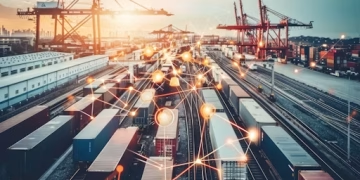By Eva Richardson | The Logistic News | March 25, 2025
As 2025 unfolds, a flurry of new logistics technologies and service offerings are emerging—not just as operational upgrades, but as critical tools to transform supply chains under pressure. From AI-powered warehousing to expanded cross-border capacity, these innovations reflect the industry’s growing need for speed, transparency, and adaptability in an era defined by uncertainty.
Here’s a closer look at the latest solutions gaining traction across global logistics.
1. AIT Expands Cross-Border Capabilities into Mexico
AIT Worldwide Logistics has significantly strengthened its cross-border operations into Mexico, addressing the rising demand for nearshoring and regional manufacturing in North America. The company now offers enhanced customs brokerage, drayage, warehousing, and trucking solutions, supporting industries like automotive, aerospace, and electronics that rely on seamless U.S.-Mexico freight corridors.
2. DHL and Scuderia Ferrari Extend Global Partnership
DHL has renewed and extended its strategic partnership with Scuderia Ferrari, reinforcing its role as the team’s official logistics partner for the Formula 1 season. Beyond motorsport, the partnership underscores DHL’s expertise in time-critical, high-value logistics, using this high-visibility platform to showcase its commitment to precision, sustainability, and speed.
3. eTrac Launches API Integration for Final-Mile Visibility
eTrac Technologies has launched a new API integration tool enabling shippers and 3PLs to achieve real-time visibility across their final-mile delivery partners. In an age where consumer expectations are driven by e-commerce speed, this solution provides vital transparency across fragmented last-mile networks, reducing delays and elevating customer experience.
4. Tive and Highway Partner for Unified Carrier Monitoring
Supply chain visibility platform Tive has teamed up with Highway, a carrier identity management system, to provide integrated tracking and verification across shipments. The collaboration allows logistics providers to track loads in motion and authenticate carrier legitimacy simultaneously, tackling both cargo theft and compliance risks in one dashboard.
5. Trinity Logistics Debuts Carbon Emissions Reporting Tool
Trinity Logistics has released a new sustainability dashboard for shippers, offering carbon footprint insights for each shipment. The feature enables companies to track, report, and reduce their Scope 3 logistics emissions—an increasingly critical requirement for ESG reporting and supply chain decarbonisation.
6. R2 Logistics Enhances FreightTech Platform
R2 Logistics has added new capabilities to its FreightTech platform, integrating predictive ETA algorithms, smart tendering, and dynamic rate forecasting. The platform aims to streamline shipper-carrier communication and drive greater automation throughout the transportation procurement process.
7. New Temperature-Controlled Facility in Atlanta
A new 200,000-square-foot temperature-controlled logistics facility has opened in Atlanta, supporting the pharmaceutical and food sectors with high-performance cold chain capabilities. The site features automated inventory tracking, remote monitoring, and FDA-compliant protocols, reflecting the critical role of reliable cold chain infrastructure in modern healthcare logistics.
8. Optym and AscendTMS Launch Smart Load Planning
Optym, known for its AI-driven optimisation tools, has partnered with AscendTMS to introduce a smart load planning module that reduces empty miles and maximizes route efficiency. This integration supports small and mid-sized carriers looking to compete in a capacity-tight, margin-sensitive market.
Industry Trend: Fragmentation Meets Integration
The overarching theme among these developments is integration. As logistics networks grow more fragmented—particularly in last-mile, cold chain, and cross-border trade—the ability to connect systems, partners, and data streams in real time is becoming the industry’s most valuable asset.
From a technology standpoint, the focus is shifting from standalone tools to ecosystem-ready platforms, where visibility, automation, and control coexist across multiple nodes of the supply chain.
Final Insight
The wave of new services and solutions in Q1 2025 reflects more than innovation—it reflects urgency. Logistics providers are no longer adding features for convenience, but for survival in a fast-changing trade environment.
As the global supply chain landscape continues to evolve, these tools won’t just support operations—they will shape the future of logistics itself.
Eva Richardson
Senior Correspondent, The Logistic News























